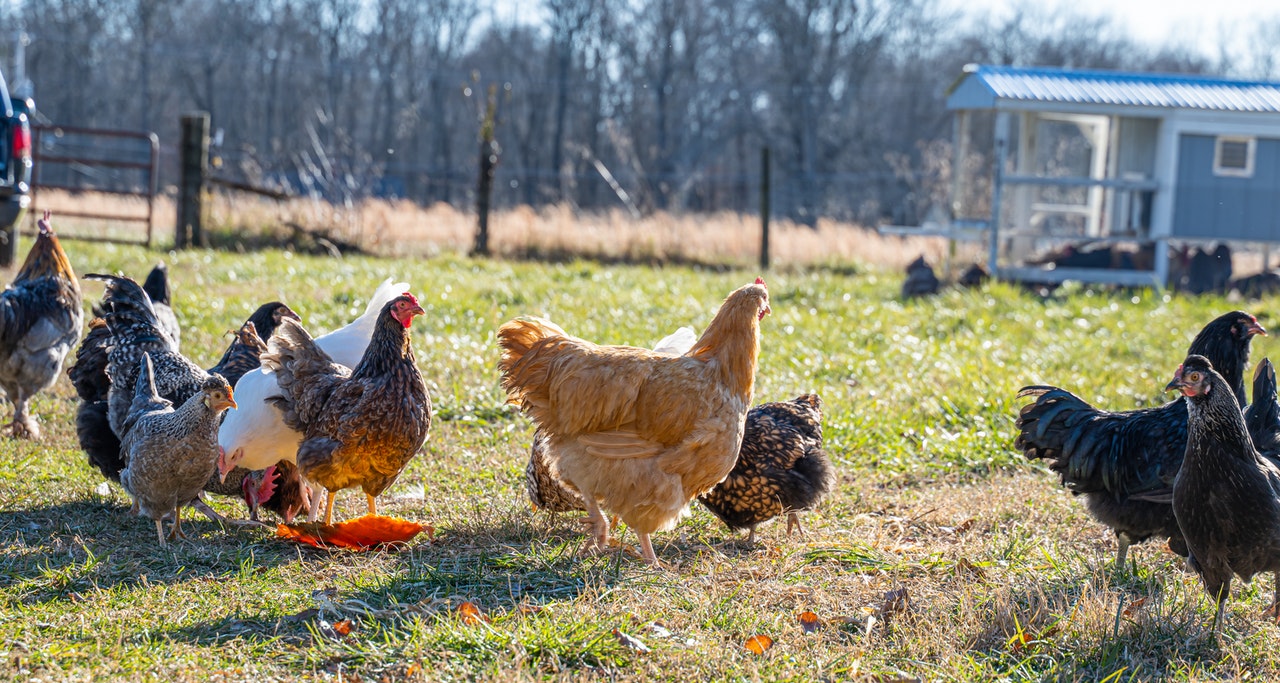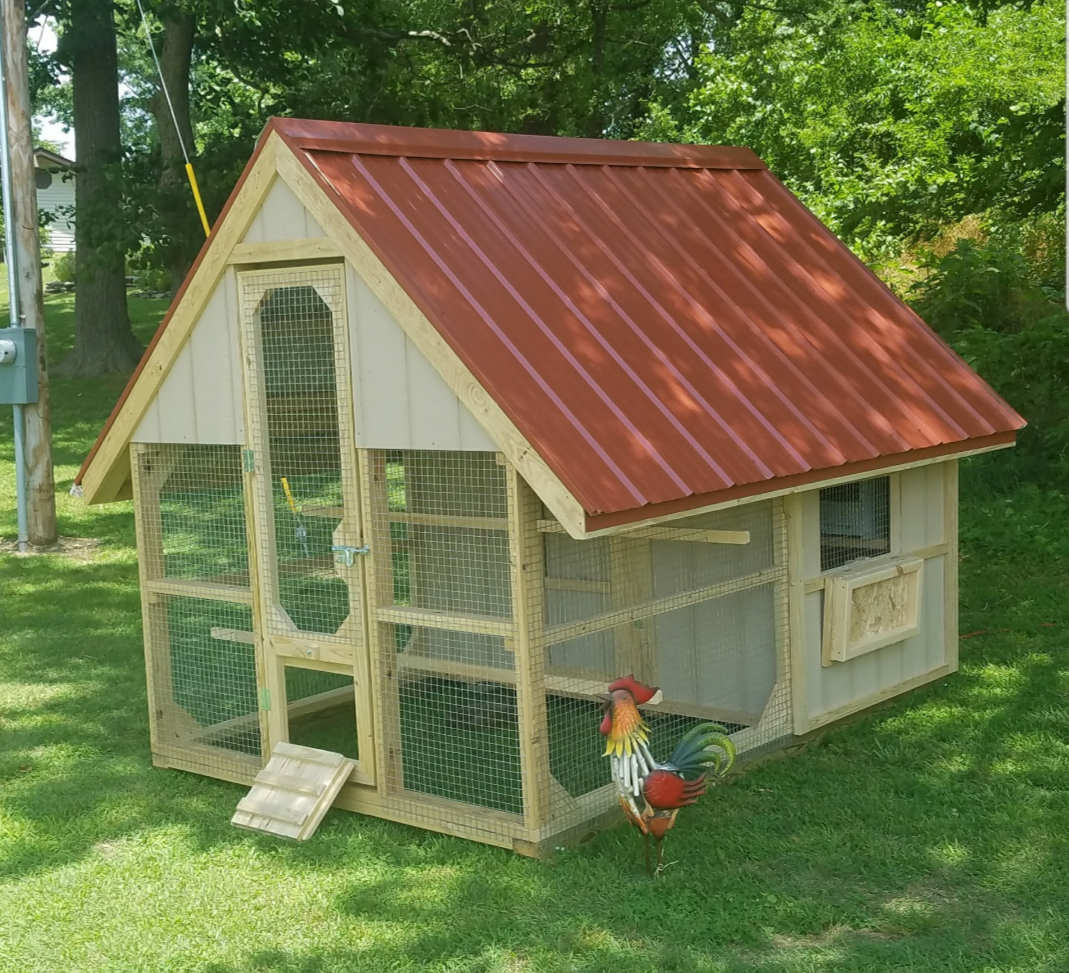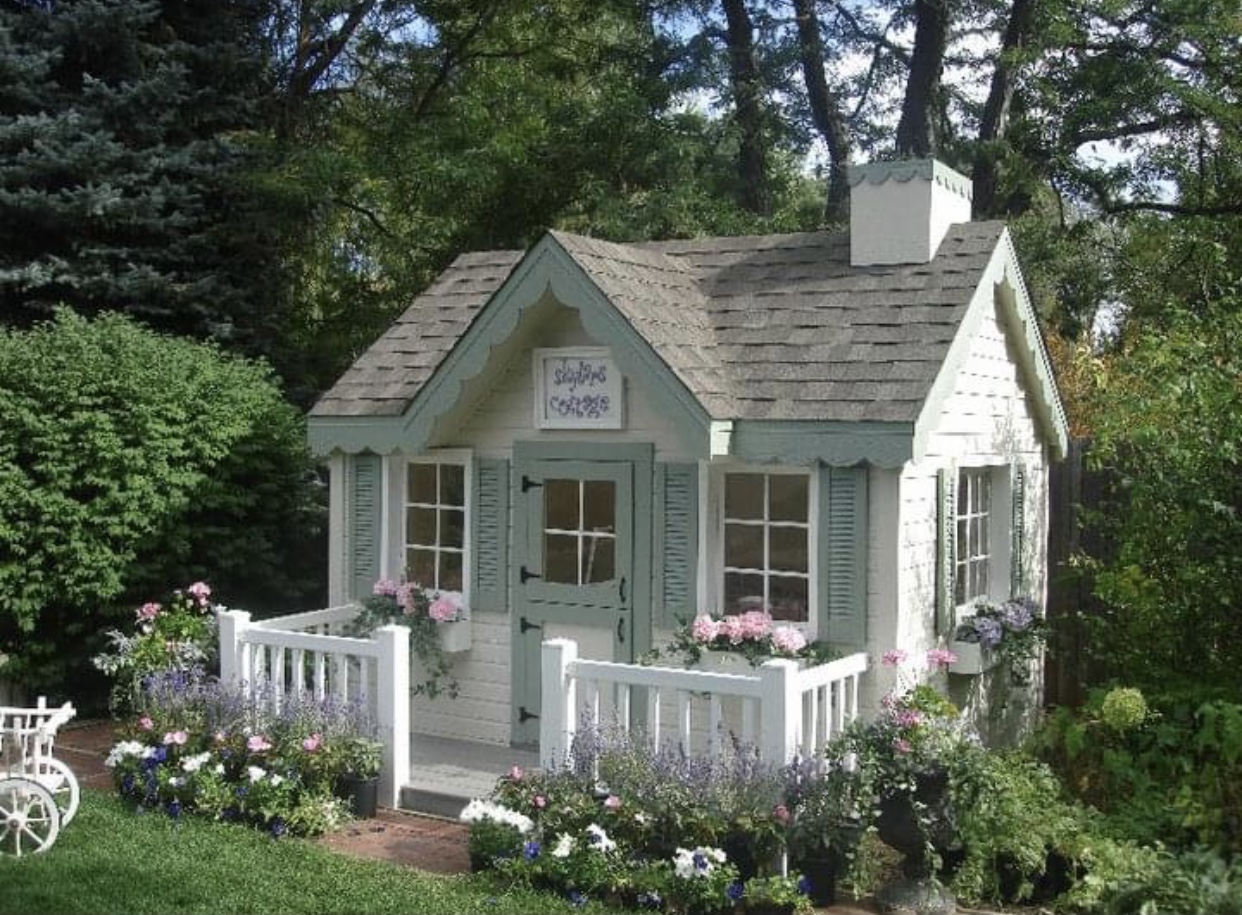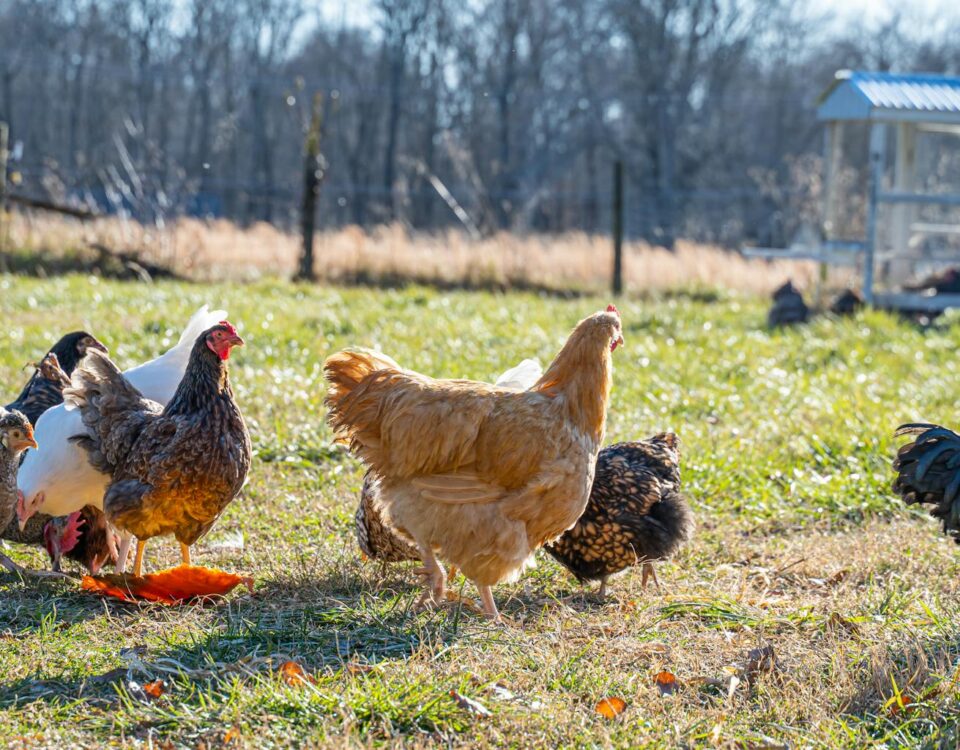
How Your Family Can Beat Inflation
March 7, 2022
Adding Fun to Your Backyard with Summer DIY Projects
May 5, 2022Simple Playhouse Chicken Coop Conversion
Building materials just keep going up in price, so building a playhouse that is convertible or can be repurposed is a great way to extend the longevity of your building project. We show you how a playhouse to chicken coop conversion is made easy. Converting your children’s playhouse after they have outgrown that period in their life to a good-looking chicken coop gives you years more use for your cost of building materials and DIY project time.

Repurposing your children’s playhouse also makes good ecological sense, we believe if something can be used again, don’t throw it out to end up in the landfill. If you build your children’s playhouse with repurposing in mind to a chicken coop later this process is even easier. You would build the playhouse with awning windows instead of vertical or horizontal windows, this way the windows don’t need to be removed from the playhouse to convert it to a chicken coop.
The Playhouse to Chicken Coop Conversion Process
Most children’s playhouses can be converted into a chicken coop pretty easily. Also, most playhouses are at least 6 feet x 8 feet and will convert to a chicken coop that would house between 12 to 15 laying hens. You don’t need to have that many hens, but that is the capacity of most children’s playhouses when converted to chicken coops. Built with this idea or not, the process of converting a playhouse to a chicken coop is a pretty easy project.

Chickens are easy to take care of and produce a lot of eggs. Eggs at what they cost today if you have a growing family can be a chunk of money each week at the grocery store, especially for organic brown eggs without antibiotics. So, planning before you start converting your children’s playhouse to a chicken coop is a good task with what your chickens will need and the components of your new chicken coop.
Chicken Coop Functions:
- Security from predators
- Protection from weather and a stable indoor temperature
- Clean water access
- Food access that can’t be contaminated
- A place to sleep or roost at night
- A convenient place for your hens to lay eggs and for you to gather them each morning
Chicken Coop Parts:
- Starting with a playhouse you probably have the beginnings of a predator-poof henhouse
- A feeder for their food that is automatic
- Water source
- A place for your hens can roost
- Simple nesting boxes
- Feed storage that is accessible from outside
- Outdoor-protected chicken run
- Windows for light and ventilation-awning windows are great
- Doors-tiny for your hens and a larger door for your access
Converting a Playhouse Into a Chicken Coop

Let’s start with door access for you and your chickens. Your children’s front door to their playhouse is usually not adult height and is a great place to start with your conversion.
- The previous front door to the playhouse will become the chicken’s opening to the chicken run. You need to remove the front door from the playhouse and install a slatted wood walkway down to the ground level for your hens to access their outdoor run.
- Most playhouses have at least two windows for ventilation, we are going to keep one of them for a new chicken coop window. Hopefully, you have awning windows installed in your children’s playhouse, if not this is the time to uninstall all playhouse windows and install one awning window for ventilation.
- If your playhouse has more than side windows, but also back and front windows, you will be converting the back window into an adult-size entrance to the chicken coop. The front windows can be taken out and you may install awning windows for light and ventilation.
- The second window when removed and will start to provide access to the laying boxes. you will need to cut into your framing and remove the framing for the window to extend the access to the side of your chicken coop to be at least 6 feet wide and 2.5 feet tall.
- After cutting the access area on the side of the coop and framing it for strength, you will install a piece of T-1-11 or suitable outdoor wood no thicker than a half-inch. You will cut your board so it covers the access area and allows enough leeway to cover it completely and install hinges on top with hooks to hold the door open and a clasp at the bottom of the door to make sure it is predator-proof from the outside.
- You can easily create a nesting boxes area by framing a platform inside your chicken coop in alignment with your outside access door the length of your chicken coop and about 2 feet wide. You should allow enough room for at least 4 laying boxes.
- Laying boxes can be as simple as plastic bins, such as Rubbermaid plastic tubs filled with straw and easily cleaned out on a regular basis.
- You may repurpose an old wooden ladder for a roost for your hens inside the chicken coop, just cut it to size to run the length of the chicken coop on the opposite side as the laying box area.
- Now it’s time to install your adult-size access door on the back of the coop for cleaning and storing purposes. You can buy a pre-hung door with just needing to cut the door area and frame to install the access door.
- If your children’s playhouse had a loft your can repurpose it for storing chicken food, otherwise, you will want to create an area inside the back adult-size access door that is predator-proof and keeps the chickens away from the grain for storage.
- A good way to supply water is with an old-fashioned gravity-fed poultry waterer or there are now reasonably priced automatic water feeders that are simple to install to keep a continuous supply of freshwater for your chickens. If you live in an area that freezes in the winter the gravity-fed waterer may be easier than protecting the hose that feeds the automatic watering system.
- Galvanized hanging feeders that are automatic stay the cleanest, but if you want a low-tech version a plastic hanging feeder works well. Hanging feeders are best for chickens because they can’t poop in their food and their watering system if tipped over doesn’t get their food wet.
- The next chore is laying straw on the floor of the chicken coop which you can recycle into compost if you use rice straw instead of conventional hay.
- You want to build your outdoor chicken run. Using field fencing is best for the fencing part, stretched tight and using ground anchors to firmly attach the field fence to the ground so predators are kept away.
- Using chicken wire stretched tight over the top of your chicken run enclosure keeps both flying and climbing predators out of your chicken coop.
We would love to see your finished playhouse to chicken coop conversion photos. You can count on Shed Windows and More for doors, windows, cupolas, and more for your playhouse to chicken coop conversion.



